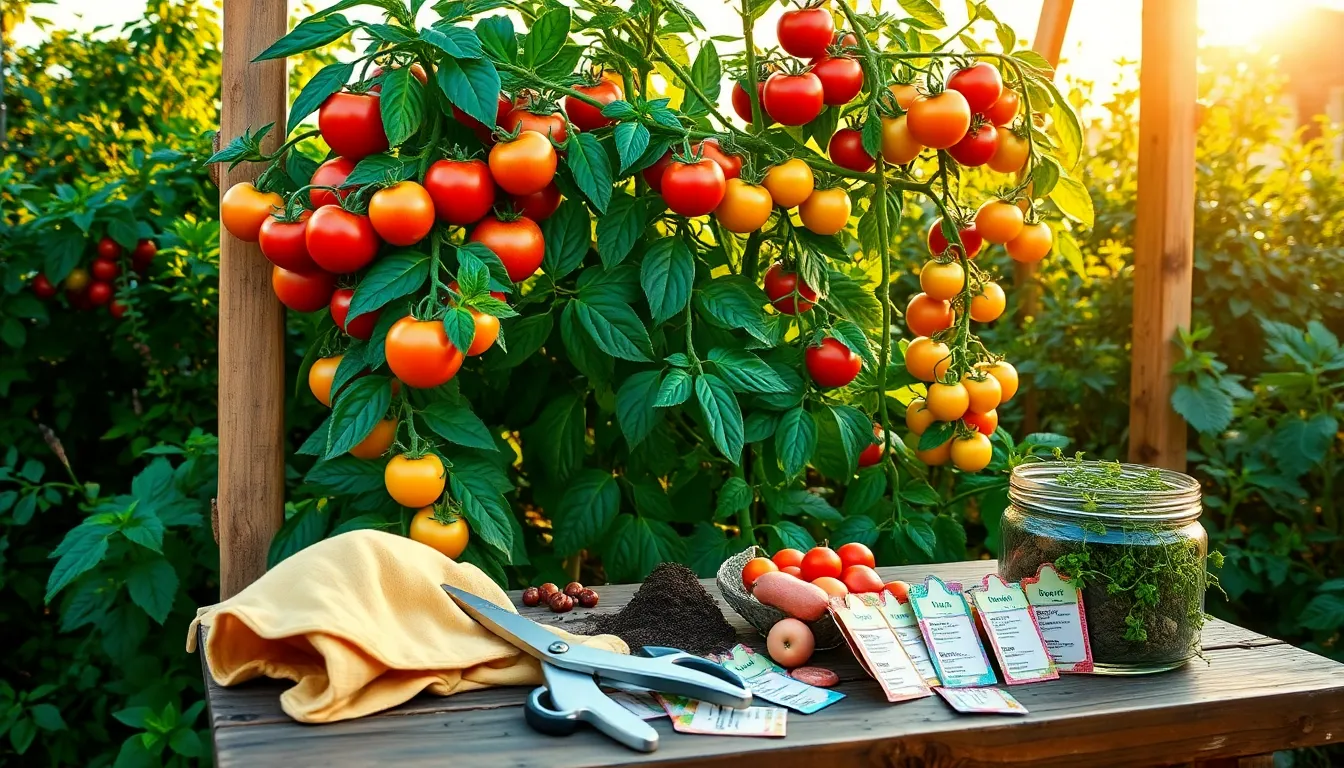There’s something profoundly rewarding about plucking a sun-warmed, ripe tomato from a plant you’ve nurtured from seed to fruit. Whether you’re just starting out with your first garden or have years of dirt under your nails, growing tomatoes offers an unparalleled sense of accomplishment and a taste that store-bought varieties simply can’t match. The journey of raising these vibrant fruits—often called the jewels of the garden—connects us back to the earth in a way that few other plants can.
For the aspiring gardener, tomatoes serve as a rite of passage, an introduction to the wonderful world of homegrown produce. In this article, you’ll discover the essentials of growing tomatoes successfully, from selecting the right variety for your climate to mastering watering and pest control. Experienced gardeners will find value in exploring advanced techniques that can enhance yield and flavor, and perhaps even learn a trick or two to rejuvenate their existing tomato practices. By the end, whether you’re a novice or a seasoned pro, you’ll be equipped with practical, actionable insights to cultivate your most bountiful tomato harvest yet.
Understanding Tomato Growth Basics
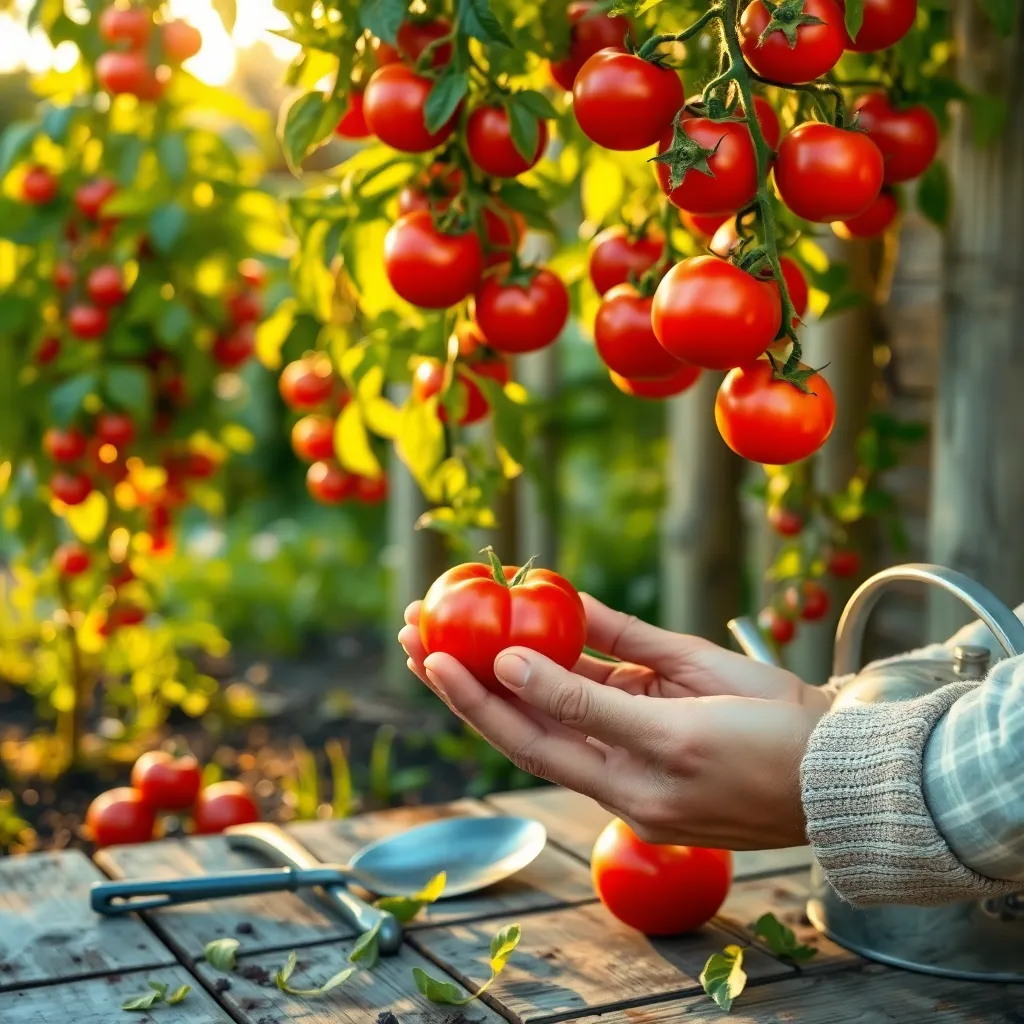
To successfully grow tomatoes, understanding their growth cycle is crucial. Tomatoes thrive in warm weather, making them ideal for planting after the last frost in your area.
For optimal growth, select a site with full sun, as tomatoes require at least six to eight hours of sunlight daily. Plant them in well-draining soil enriched with organic matter, such as compost, to promote healthy root development.
Watering is another essential aspect of tomato care; aim to keep the soil consistently moist but not waterlogged. A good practice is to water deeply once or twice a week, adjusting frequency based on weather conditions.
Beginner gardeners might consider starting with determinate varieties, which grow to a fixed size and fruit all at once, making them easier to manage. More experienced gardeners can experiment with indeterminate types, which continue growing and producing fruit throughout the season.
Advanced techniques, like pruning and staking, can further enhance yield and plant health. Pruning involves removing suckers, which are small shoots between the main stem and branches, to improve air circulation and focus energy on fruit production.
Choosing Ideal Tomato Varieties
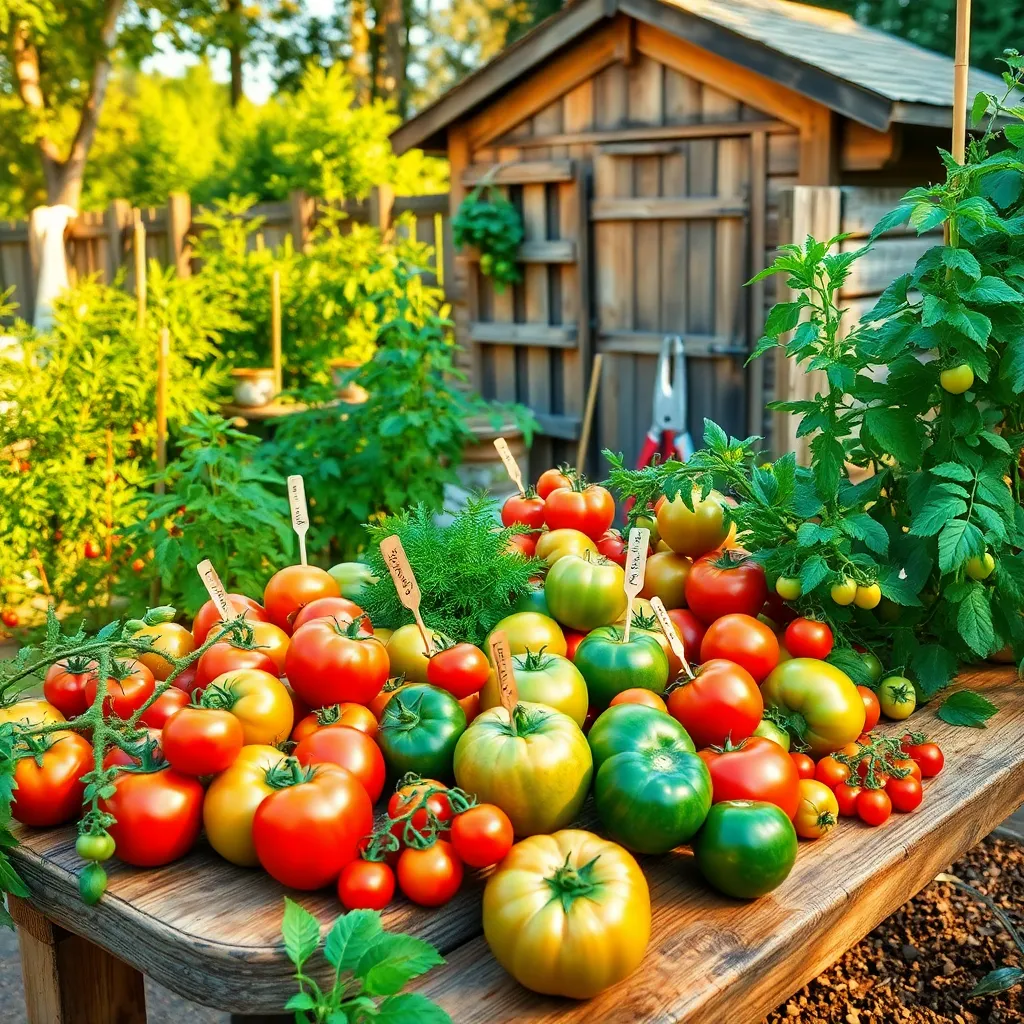
When selecting tomato varieties, consider the growing conditions in your region, such as climate and soil type. Determinate varieties are ideal for smaller spaces and containers, while indeterminate varieties require more room and support.
It’s essential to match the tomato variety to your taste preferences and intended use. For those who love salads, cherry tomatoes like ‘Sungold’ or ‘Sweet 100’ are perfect due to their sweetness and small size.
For gardeners interested in making sauces or pastes, Roma tomatoes or ‘San Marzano’ are excellent choices because of their meaty texture. These types have fewer seeds and a lower water content, making them ideal for cooking.
Ensure your soil is rich in organic matter by adding compost or well-rotted manure to improve fertility and drainage. Tomatoes thrive in slightly acidic to neutral soil (pH 6.0-7.0), so test your soil and amend it as needed for optimal growth.
Avoid watering foliage to prevent fungal diseases, and instead, water the base of the plant deeply and consistently. Mulching around your tomato plants can help retain moisture and suppress weeds, promoting healthier growth.
For an abundant harvest, consider staking or caging your tomato plants to provide support and keep fruits off the ground. This practice not only helps with air circulation but also reduces the risk of disease and improves fruit quality.
Preparing Soil for Tomato Plants
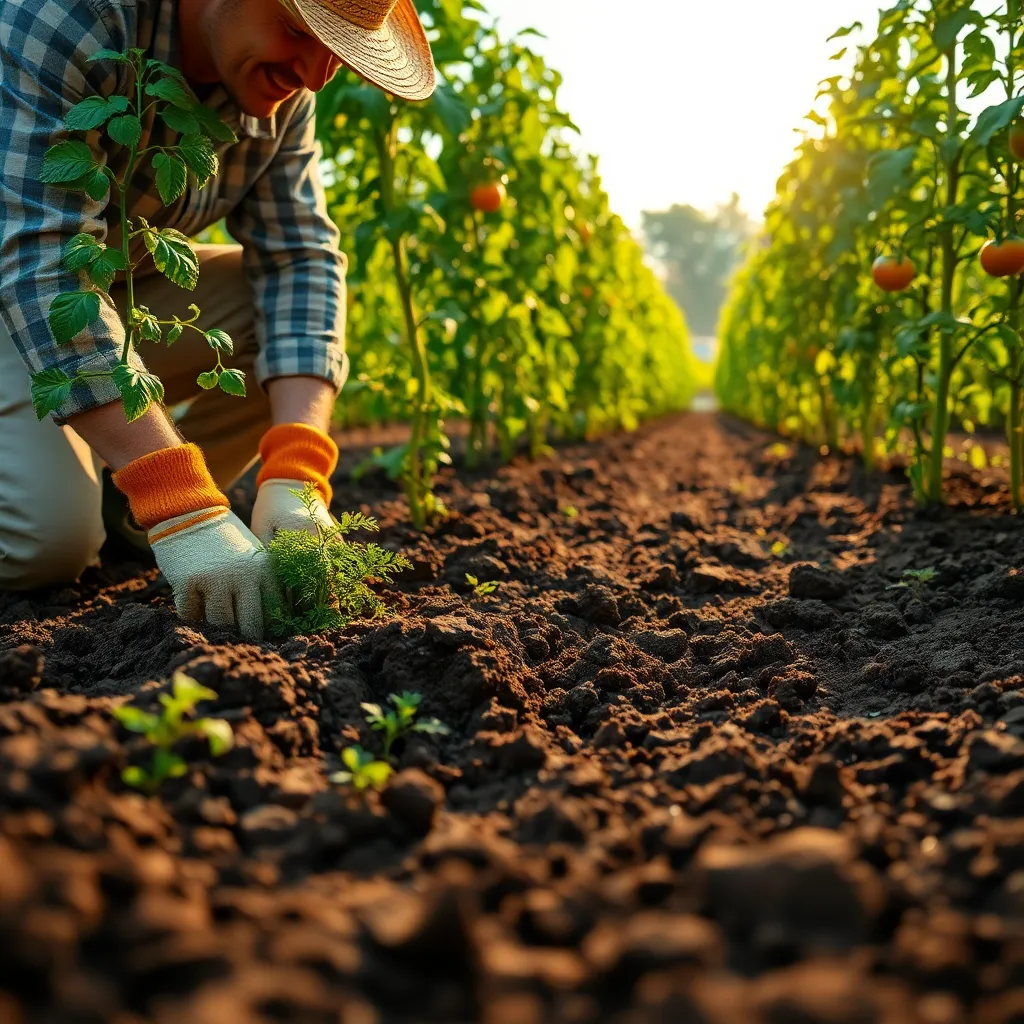
Before planting your tomato seedlings, it’s crucial to ensure your soil is well-prepared to support healthy growth. Start by testing your soil’s pH level; tomatoes thrive best in soil with a pH between 6.0 and 6.8.
To adjust the soil pH if necessary, incorporate lime to raise it or sulfur to lower it. Additionally, enriching your soil with organic matter such as compost or well-rotted manure can enhance its fertility and drainage.
Tomato plants need soil that retains moisture yet drains well, so consider adding coarse sand or perlite if your soil is heavy clay. For sandy soils, boosting organic content helps improve moisture retention, giving your tomatoes a better chance to thrive.
It’s also beneficial to rotate your tomato crops to a different area each year to prevent disease buildup in the soil. Planting tomatoes in the same location annually can lead to soil-borne diseases, so practice crop rotation to keep your plants healthy.
Lastly, consider mulching around your tomato plants to conserve moisture and suppress weeds. A layer of straw, grass clippings, or shredded leaves is effective and will break down over time, adding nutrients back into the soil.
Effective Watering and Feeding Tips

Watering tomatoes effectively is crucial for their growth and fruit production. It’s best to water deeply and infrequently, allowing the soil to dry out slightly between waterings to encourage deep root growth.
Consider watering tomatoes early in the morning when temperatures are cooler, reducing evaporation. Consistent moisture is key, so aim to keep the soil evenly moist without letting it become waterlogged.
Mulching can help retain soil moisture and regulate temperature. Use organic materials like straw or shredded leaves, applying a 2-3 inch layer around the base of the plants but keeping it away from the stems.
Feeding your tomato plants correctly can significantly boost their growth and productivity. Start by using a balanced fertilizer when planting, then switch to a high-potassium feed once the plants begin to flower.
For a more tailored approach, consider using a liquid tomato feed every two weeks during the growing season. This ensures that plants receive a steady supply of nutrients, supporting robust growth and fruiting.
Advanced gardeners might opt for organic methods, like compost tea or seaweed extracts, to provide a nutrient boost. These can improve soil health while supplying essential minerals to your plants.
Managing Pests and Diseases
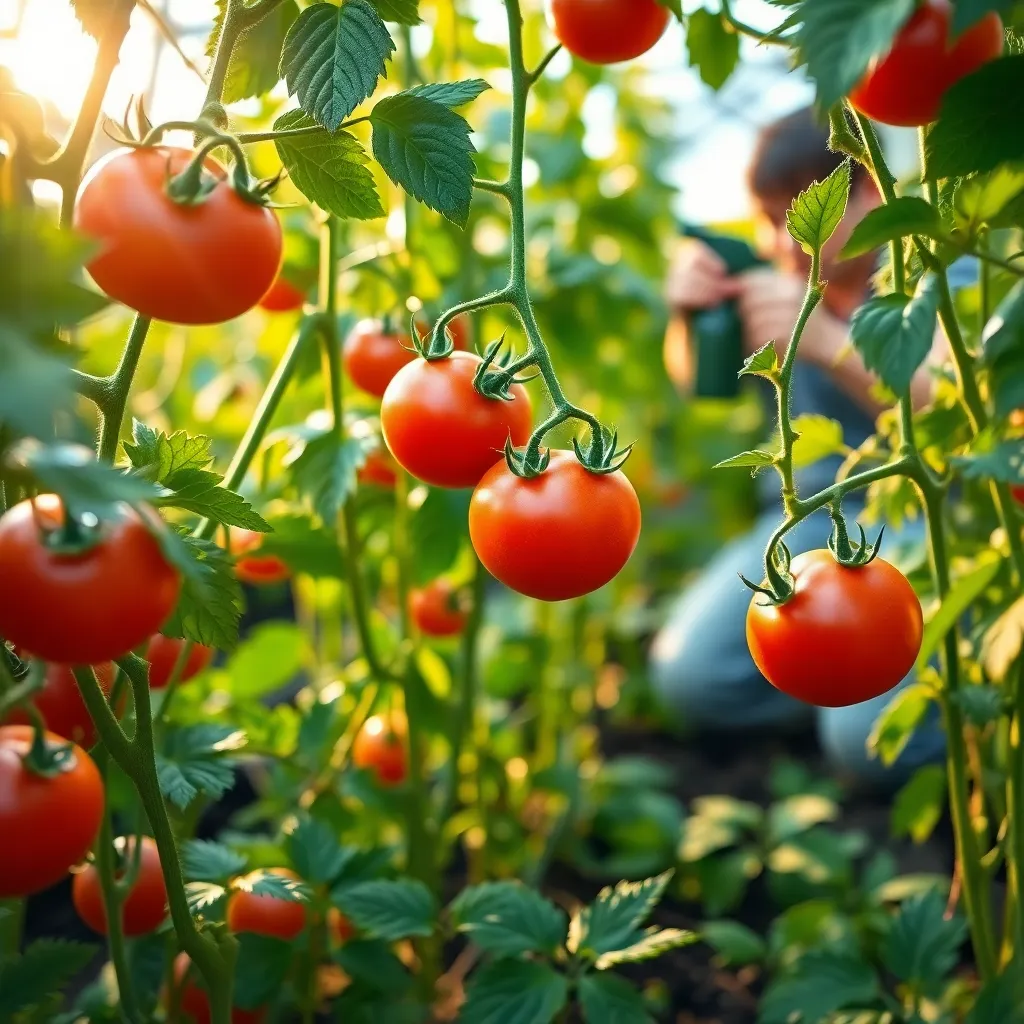
Keeping your tomato plants healthy involves managing common pests and diseases effectively. Regularly inspect your plants for any signs of trouble, such as chewed leaves or discolored spots, which can indicate the presence of pests or disease.
It’s beneficial to apply integrated pest management (IPM) strategies to minimize the use of chemical pesticides. This includes introducing beneficial insects like ladybugs or lacewings, which naturally control aphid populations, a common pest for tomatoes.
Fungal diseases, such as blight, are prevalent in humid conditions, so ensure your tomato plants have good air circulation. Prune lower leaves to prevent soil-borne diseases from splashing up during watering or rain, and use mulch to reduce splashing.
For more advanced care, consider rotating your crops each year to prevent the build-up of soil-borne diseases. Additionally, using disease-resistant tomato varieties can significantly reduce the risk of problems, keeping your garden thriving.
Conclusion: Growing Success with These Plants
In our exploration of the metaphorical guide, “What Is Grow Tomatoes,” we’ve unearthed five essential relationship concepts: nurturing consistent communication, tending to emotional needs, cultivating mutual respect, fostering growth through shared experiences, and weathering challenges together. Each of these elements is akin to the care required to grow a thriving tomato plant, reminding us that relationships flourish under attentive and deliberate care.
As your next step, choose one concept to focus on this week—perhaps starting with nurturing communication by setting aside dedicated time each day to connect with your partner. This simple yet profound practice can lay the groundwork for deeper understanding and connection.
Remember, relationships are dynamic and ever-evolving. Bookmark this article now to revisit these insights whenever you need a gentle reminder or a fresh perspective. Doing so will equip you with the knowledge to cultivate a healthy, fulfilling relationship garden.
Looking ahead, the commitment to apply these concepts will undoubtedly lead to a more resilient and vibrant relationship. You have the tools; now, tend to your relationship with the same care you would give to a budding tomato plant, and watch it grow into something extraordinary.

